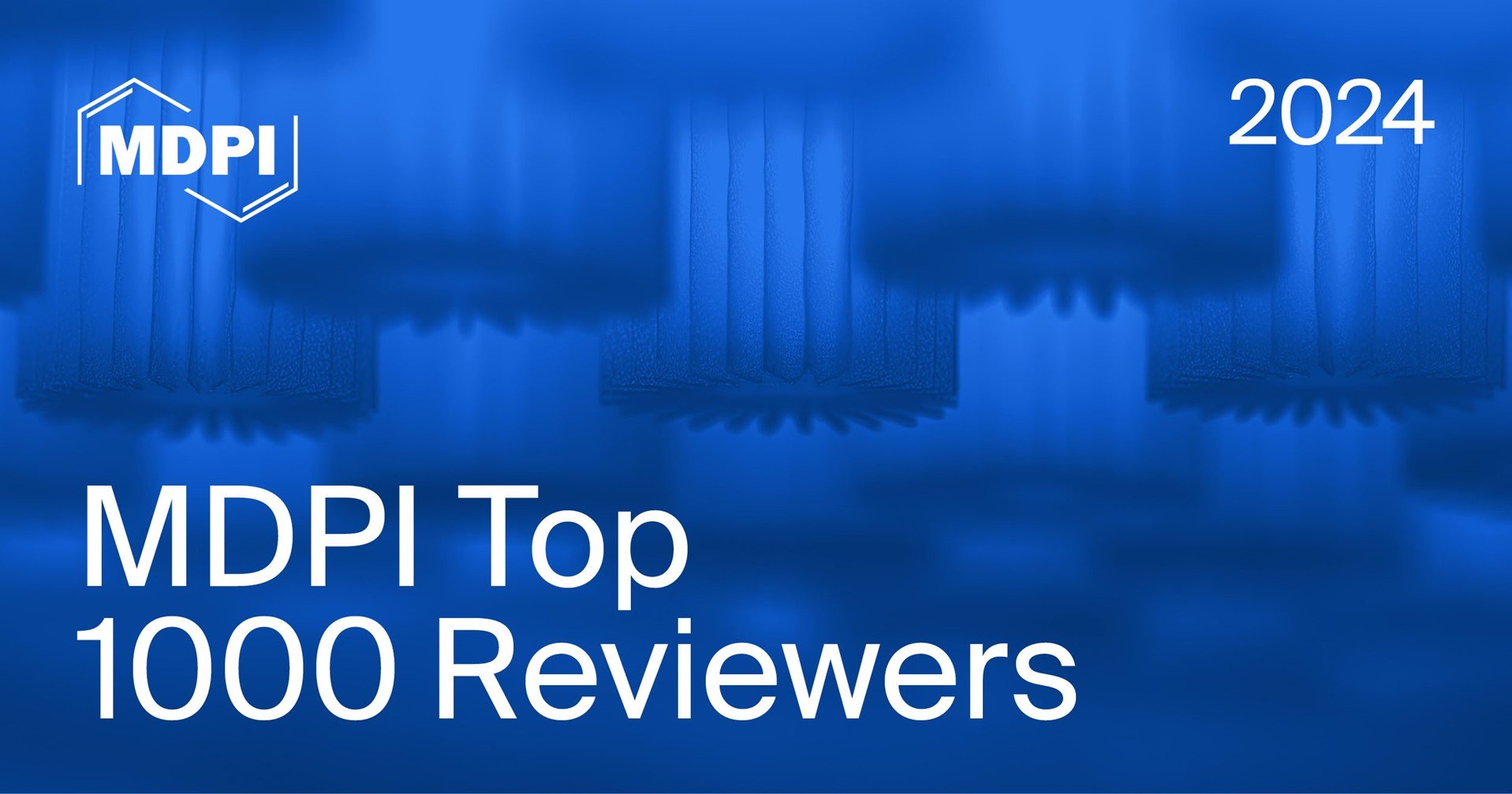-
 From Nature to Nanomedicine: Enhancing the Antitumor Efficacy of Rhein, Curcumin, and Resveratrol
From Nature to Nanomedicine: Enhancing the Antitumor Efficacy of Rhein, Curcumin, and Resveratrol -
 Myocardial Perfusion Imaging with Cardiovascular Magnetic Resonance in Nonischemic Cardiomyopathies: An In-Depth Review of Techniques and Clinical Applications
Myocardial Perfusion Imaging with Cardiovascular Magnetic Resonance in Nonischemic Cardiomyopathies: An In-Depth Review of Techniques and Clinical Applications -
 Strategies to Reduce Hospital Length of Stay: Evidence and Challenges
Strategies to Reduce Hospital Length of Stay: Evidence and Challenges -
 Western Experience of Hepatolithiasis: Clinical Insights from a Case Series in a Tertiary Center
Western Experience of Hepatolithiasis: Clinical Insights from a Case Series in a Tertiary Center -
 Multimodal Prehabilitation in Major Abdominal Surgery—Rationale, Modalities, Results and Limitations
Multimodal Prehabilitation in Major Abdominal Surgery—Rationale, Modalities, Results and Limitations
Journal Description
Medicina
Medicina
is an international, peer-reviewed, open access journal that covers all problems related to medicine. The journal is owned by the Lithuanian University of Health Sciences (LUHS) and is published monthly online by MDPI. Partner organizations are the Lithuanian Medical Association, Vilnius University, Rīga Stradiņš University, the University of Latvia, and the University of Tartu.
- Open Access— free for readers, with article processing charges (APC) paid by authors or their institutions.
- High Visibility: indexed within Scopus, SCIE (Web of Science), PubMed, MEDLINE, PMC, and other databases.
- Journal Rank: JCR - Q1 (Medicine, General and Internal) / CiteScore - Q1 (General Medicine)
- Rapid Publication: manuscripts are peer-reviewed and a first decision is provided to authors approximately 17.5 days after submission; acceptance to publication is undertaken in 2.6 days (median values for papers published in this journal in the first half of 2025).
- Recognition of Reviewers: reviewers who provide timely, thorough peer-review reports receive vouchers entitling them to a discount on the APC of their next publication in any MDPI journal, in appreciation of the work done.
Impact Factor:
2.4 (2024);
5-Year Impact Factor:
2.8 (2024)
Latest Articles
Breast Lesions of Uncertain Malignant Potential and Risk of Breast Cancer Development: A Single-Center Experience on 10,531 Consecutive Biopsies
Medicina 2025, 61(10), 1877; https://doi.org/10.3390/medicina61101877 (registering DOI) - 20 Oct 2025
Abstract
Background and Objectives: Breast lesions of uncertain malignant potential identified on biopsy, known as “B3 lesions,” constitute a significant portion of diagnoses in numerous published studies. These lesions are associated with a variable risk of coinciding malignant tumors, and current guidelines recommend
[...] Read more.
Background and Objectives: Breast lesions of uncertain malignant potential identified on biopsy, known as “B3 lesions,” constitute a significant portion of diagnoses in numerous published studies. These lesions are associated with a variable risk of coinciding malignant tumors, and current guidelines recommend complete excision, which can occasionally lead to an upgrade in the resection specimen. However, alternative, less invasive treatment strategies, such as clinical follow-up, may be considered. In this study, we retrospectively analyzed diagnostic biopsies from our institution to determine the upgrade rate of each B3 lesion subgroup to breast malignancy following complete excision. Materials and Methods: All breast biopsies conducted at our institution from 1 January 2018 to 30 November 2022 and classified as B3 lesions were included in this study. The lesions were categorized into groups and subgroups based on their growth pattern and histopathological features. To determine the upgrade rate to ductal carcinoma in situ (DCIS) or invasive breast cancer (IBC) for each B3 lesion subgroup, we assessed the histological concordance between the biopsy and the resection specimen. Results: During the study period, 10,531 biopsies were performed, of which 1045 (9.93%) were classified as B3 lesions. Among these, 795 (76.08%) were subsequently resected, either through surgical procedures (98.32%) or using the Vacuum-Assisted Excision technique (1.68%). Histological examination revealed that 89 (11.19%) of the resected B3 lesions were upgraded to breast malignancy, with 59 cases (7.42%) progressing to DCIS, 22 cases (2.76%) to IBC, and 8 cases (1.01%) to borderline or malignant phyllodes tumor. The upgrade rate varied among histopathological subgroups, being lowest in complex sclerosing lesions without atypia (4.95%, 95% CI: 2.5–8.7%) and highest in intraductal papillomas with atypia (58.82%; 95% CI: 32.9–81.6%). Conclusions: Statistically significant differences were observed between B3 lesion subgroups, with a higher risk of upgrade in lesions exhibiting atypia. As our understanding of B3 lesions evolves, there is potential to implement therapeutic strategies tailored to the specific risk associated with each subgroup. This approach could allow for less invasive management options, such as clinical or radiological follow-up, thereby sparing patients from unnecessary invasive procedures when appropriate.
Full article
(This article belongs to the Special Issue New Developments in Diagnosis and Management of Breast Cancer)
►
Show Figures
Open AccessArticle
Feasibility of Bedside Ultrasound-Guided Peripherally Inserted Central Catheter Placement in Cancer Patients in Palliative Care: A Single-Center Retrospective Study
by
Hak Ryeong Kim, Junyong Lee, Jang Yong Kim and Hwa Sun Kim
Medicina 2025, 61(10), 1876; https://doi.org/10.3390/medicina61101876 (registering DOI) - 19 Oct 2025
Abstract
Background and Objectives: Some cancer patients in palliative care need to access intravenous administration of medications to relieve symptoms. Few studies have explicitly assessed the safety and feasibility of peripherally inserted central catheter (PICC) insertion at bedside in palliative care settings. In
[...] Read more.
Background and Objectives: Some cancer patients in palliative care need to access intravenous administration of medications to relieve symptoms. Few studies have explicitly assessed the safety and feasibility of peripherally inserted central catheter (PICC) insertion at bedside in palliative care settings. In this study, we suggest the usefulness, safety, and feasibility of bedside ultrasound-guided PICC placement as a tool for improvement in the quality of life for patients in palliative and hospice care settings. Materials and Methods: The study population, with terminal cancer and admitted to a palliative and hospice care unit in the Veterans Health Service Medical Center, was evaluated (N = 150). The patients were divided into two groups based on the methods of PICC insertion: Group 1 (PICC at bedside, N = 75) and Group 2 (PICC in intervention room, N = 75). The two groups were matched for age, sex, the level of Eastern Cooperative Oncology Group (ECOG) performance status, and types of primary cancer. Results: The success rates of the PICC procedure for Groups 1 and 2 were 89.33% and 97.33%, respectively, with no significant difference between the groups (p = 0.102). The mean duration (days) of catheter use was longer in Group 1 (23.31 ± 16.36) compared to that in Group 2 (21.90 ± 18.95), with no statistically significant difference (p = 0.639). Multivariable logistic regression analyses confirmed that Group 1 was not inferior to Group 2 regarding procedural success (Model 2, p = 0.21) and catheter dwell time (Model 2, p = 0.66). The most common cause of catheter removal in both groups was death, followed by self-removal and hospital discharge (p = 0.386). Conclusions: This study suggests that ultrasound-guided PICC insertion at bedside may have comparable procedural outcomes with potentially reducing the risks associated with intra-hospital patient transport compared with fluoroscopy-guided placement. We suggest this bedside approach can be considered a feasible and safe method for improving the quality of life of patients in palliative care settings.
Full article
(This article belongs to the Section Epidemiology & Public Health)
►▼
Show Figures

Figure 1
Open AccessArticle
Effects of Lower Limb-Focused Low-Intensity Resistance Exercise Using Slow Movements on Locomotive Syndrome in Patients with Type 2 Diabetes Mellitus
by
Toru Morihara, Kazufumi Hisamoto, Naoki Okubo, Hideki Fukushima, Tomoyuki Matsui, Machiko Hiramoto, Masahide Hamaguchi, Hiroshi Okada, Takaaki Matsui, Dan Imai, Michiaki Fukui and Kenji Takahashi
Medicina 2025, 61(10), 1875; https://doi.org/10.3390/medicina61101875 (registering DOI) - 19 Oct 2025
Abstract
►▼
Show Figures
Background and Objectives: Type 2 diabetes mellitus (T2DM) is a major public health issue worldwide that leads to reductions in skeletal muscle mass and lower-limb function, thereby increasing the risk of locomotive syndrome (LS), a mobility-limiting condition. This study investigated the effects
[...] Read more.
Background and Objectives: Type 2 diabetes mellitus (T2DM) is a major public health issue worldwide that leads to reductions in skeletal muscle mass and lower-limb function, thereby increasing the risk of locomotive syndrome (LS), a mobility-limiting condition. This study investigated the effects of a 5-month, lower limb-focused, low-intensity resistance exercise program using slow movements (slow exercise) on LS in patients with T2DM. Materials and Methods: Nineteen patients with T2DM (69.3 ± 7.3 years, 10 men and 9 women) performed slow exercises three times per week for 5 months. The program consisted of bodyweight and machine-based exercises with a load of 30–50% one-repetition maximum using slow concentric–isometric–eccentric phases. Assessments included HbA1c, LS stage distribution (non-LS, LS-1, LS-2, LS-3), LS risk tests (two-step, stand-up, and GLFS-25), five-time sit-to-stand test, four-meter gait speed, and skeletal muscle mass index (SMI) and phase angle (PhA) by bioelectrical impedance analysis. Statistical comparisons were performed using repeated one-way ANOVA with Tukey’s post hoc test and Cochran’s Q test. Results: HbA1c decreased from 7.5 ± 0.7% to 7.2 ± 0.8% (p < 0.05). LS stage distribution improved significantly (stage 3: 4 to 0; non-LS: 1 to 5; each p < 0.05). The two-step test and GLFS-25 improved (1.17 ± 0.15 to 1.27 ± 0.17; 14.6 ± 13.1 to 7.6 ± 6.3; each p < 0.05). Five-time sit-to-stand time improved from 9.28 ± 2.53 s to 7.73 ± 1.54 s, and four-meter gait speed improved from 3.58 ± 0.95 s to 3.07 ± 0.55 s (each p < 0.05). SMI and PhA increased (6.82 ± 1.00 to 6.95 ± 0.92 kg/m2; 4.35 ± 0.67 to 4.56 ± 0.78 degrees; each p < 0.05). Conclusions: A 5-month slow exercise program significantly improved LS severity, muscle quantity and quality, and lower-limb function in patients with T2DM. Slow exercise may be a safe and effective intervention to improve mobility and maintain independence in this population.
Full article
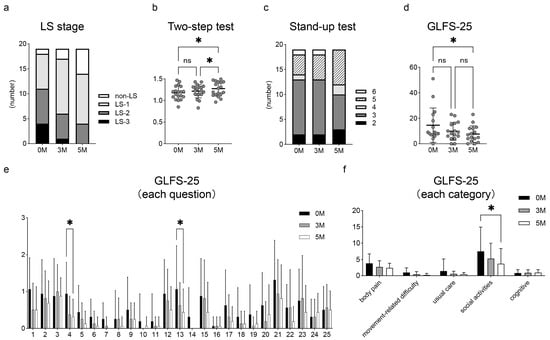
Figure 1
Open AccessArticle
Clinical Outcomes of Transdiscal Screws for Thoracolumbar Spinal Fractures with Marked Anterior Distraction Gap Accompanied by Diffuse Idiopathic Skeletal Hyperostosis
by
Ryo Ugawa, Yoshihiro Fujiwara and Toshiyuki Matsumoto
Medicina 2025, 61(10), 1874; https://doi.org/10.3390/medicina61101874 (registering DOI) - 19 Oct 2025
Abstract
Background and Objectives: Diffuse idiopathic skeletal hyperostosis (DISH)-related spinal fractures with marked anterior distraction are highly unstable and pose substantial surgical challenges. The transdiscal screw for diffuse idiopathic skeletal hyperostosis (TSD) technique has been proposed to enhance fixation strength by penetrating adjacent
[...] Read more.
Background and Objectives: Diffuse idiopathic skeletal hyperostosis (DISH)-related spinal fractures with marked anterior distraction are highly unstable and pose substantial surgical challenges. The transdiscal screw for diffuse idiopathic skeletal hyperostosis (TSD) technique has been proposed to enhance fixation strength by penetrating adjacent vertebral endplates; however, its clinical utility in large-displacement cases remained unclear. Materials and Methods: In this retrospective study, we reviewed 21 patients with thoracolumbar DISH-related fractures and an anterior fracture gap ≥ 15 mm, who underwent posterior fixation between 2010 and 2024. 11 patients underwent TSD fixation (TSD group), and 10 underwent conventional fixation without bilateral TSD (control group). Results: The mean number of fused segments did not differ significantly between the groups (5.0 ± 1.4 vs. 5.0 ± 1.3, p = 0.43). Operative time was comparable (164 ± 57 vs. 168 ± 60 min, p = 0.90). Blood loss tended to be lower in the TSD group (306 ± 334 vs. 528 ± 658 mL, p = 0.33). For fracture-gap reduction, the TSD group improved from 17.4 ± 2.3 mm preoperatively to 13.8 ± 4.4 mm postoperatively and 2.0 ± 3.6 mm at final follow-up, while the control group showed less reduction (16.8 ± 2.2, 15.4 ± 1.4, and 7.0 ± 9.1 mm, respectively). Screw loosening occurred in three TSD patients and six controls (p = 0.13). All patients in the TSD group achieved bone union without reoperation, whereas four controls experienced implant backout, three required reoperation, and two failed to achieve bone union (p = 0.035). Conclusions: Posterior fixation using TSD provided reliable stability, maintained reduction, and reduced the risk of implant failure compared with conventional fixation in highly unstable DISH-related fractures with anterior distraction. Although larger prospective studies are needed, TSD may represent a valuable surgical option for this challenging patient population.
Full article
(This article belongs to the Special Issue Spinal Surgery: Advances and Concerns)
►▼
Show Figures
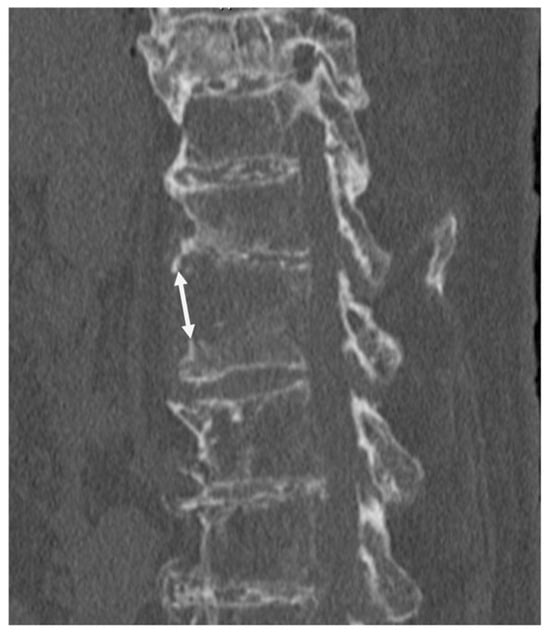
Figure 1
Open AccessArticle
Plasma NfL and GFAP as Candidate Biomarkers of Disease Activity in NMOSD and MOGAD
by
Jarmila Szilasiová, Miriam Fedičová, Marianna Vitková, Zuzana Gdovinová, Jozef Szilasi, Pavol Mikula and Milan Maretta
Medicina 2025, 61(10), 1873; https://doi.org/10.3390/medicina61101873 (registering DOI) - 18 Oct 2025
Abstract
Background and Objectives: Neuromyelitis optica spectrum disorder (NMOSD) and MOG antibody-associated disease (MOGAD) are distinct autoimmune demyelinating disorders of the central nervous system, characterized by different pathological and clinical features. Reliable biomarkers are essential for accurate diagnosis and monitoring of disease activity.
[...] Read more.
Background and Objectives: Neuromyelitis optica spectrum disorder (NMOSD) and MOG antibody-associated disease (MOGAD) are distinct autoimmune demyelinating disorders of the central nervous system, characterized by different pathological and clinical features. Reliable biomarkers are essential for accurate diagnosis and monitoring of disease activity. Glial fibrillary acidic protein (GFAP) and neurofilament light chain (NfL) are promising candidates, reflecting astrocytic and axonal damage, respectively. Materials and Methods: To investigate the relationship between astroglial (GFAP) and neuronal (NfL) protein levels in the peripheral blood, 89 plasma samples were analyzed using Simoa immunoassays. The concentrations of pNfL and pGFAP were measured in three groups: AQP4-IgG-positive NMOSD patients (n = 18), MOGAD patients (n = 12), and healthy controls (HCs, n = 19). Statistical analyses assessed group differences, correlations, and the predictive value of biomarkers for disease activity. Results: Both NMOSD and MOGAD patients exhibited elevated pNfL compared with controls, indicating neuroaxonal injury. No significant differences in pNfL, pGFAP, or pGFAP/pNfL ratios were observed between patient groups. The pGFAP levels and the pGFAP/pNfL ratio were significantly higher in NMOSD patients, particularly during attacks, indicating prominent astrocyte damage. Correlations revealed associations between biomarker levels, disability, and disease duration. pNfL demonstrated high accuracy in predicting recent relapses (AUC = 0.906), whereas pGFAP showed moderate predictive capacity (AUC = 0.638). Elevated pNfL and pGFAP levels were associated with an increased likelihood of relapse within six months. Conclusions: Plasma NfL and GFAP are promising biomarkers for assessing tissue injury and disease activity in NMOSD and MOGAD. NfL predicts relapses, while GFAP primarily reflects astrocytic damage in NMOSD. Longitudinal studies are warranted to validate these biomarkers and establish clinical thresholds for disease management.
Full article
(This article belongs to the Section Neurology)
Open AccessArticle
The Genetic Polymorphisms of CYP2C9 and VKORC1 in the Saudi Population and Their Impact on Anticoagulant Management
by
Mohammad Al Hamad
Medicina 2025, 61(10), 1872; https://doi.org/10.3390/medicina61101872 (registering DOI) - 18 Oct 2025
Abstract
Background and objectives: Warfarin is a commonly used anticoagulant with a narrow therapeutic index that requires a precise dose to achieve efficacy and safety. Genetic variations in the CYP2C9 and VKORC1 genes significantly contribute to individual responses to warfarin, influencing both drug
[...] Read more.
Background and objectives: Warfarin is a commonly used anticoagulant with a narrow therapeutic index that requires a precise dose to achieve efficacy and safety. Genetic variations in the CYP2C9 and VKORC1 genes significantly contribute to individual responses to warfarin, influencing both drug metabolism and pharmacodynamics. The current study aims to investigate the frequency of CYP2C9 and VKORC1 variant genotypes and determine the appropriate warfarin dosage for patients in Saudi Arabia. Materials and Methods: Blood samples were collected from 100 Saudi patients undergoing treatment with warfarin. DNA was extracted and purified from the whole blood, and variants in the CYP2C9 and VKORC1 genes were analyzed using multiplex PCR techniques. Results: The analysis revealed that the VKORC1 GG genotype was the most common, at 54%, followed by GA at 30%, and the AA at 16%. For CYP2C9, the *1/*1 genotype predominated at 71%, whereas the *1/*2 genotype was found in 14%, the *1/*3 genotype was found in 11%, and the *2/*3 genotype was found in in 2%, being less frequently observed. Patients with VKORC1 GG required significantly higher warfarin doses than those with GA and AA genotypes. Similarly, CYP2C9 *1/*1 patients required higher doses than those with *1/*3 and *2/*3 variants. No significant differences in INR levels across genotypes were found, indicating that while genetic variations influence dosing, they do not significantly alter the therapeutic INR range. Conclusions: The findings indicate that genetic variations influence drug metabolism and response in the Saudi population, aligned with global studies. Such tailored approaches could enhance treatment efficacy and reduce adverse effects, underscoring the role of pharmacogenomics in patient care and optimizing warfarin therapy in unique genetic populations.
Full article
(This article belongs to the Section Genetics and Molecular Medicine)
►▼
Show Figures
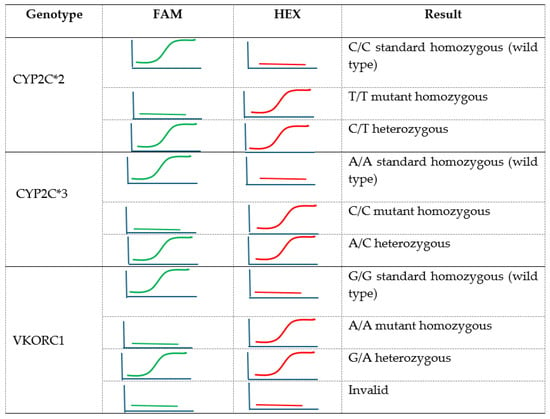
Figure 1
Open AccessArticle
Diabetic Complication Profiles and Associated Risk Factors: A Comprehensive Analysis from Two Public Hospitals in the Najran Region, Southern Saudi Arabia
by
Farooq Wani, Saeed AlMutyif, Altaf Bandy, Ashokkumar Thirunavukkarasu, Ekremah Alzarea, Muath Alsurur and Basil Alomair
Medicina 2025, 61(10), 1871; https://doi.org/10.3390/medicina61101871 (registering DOI) - 18 Oct 2025
Abstract
Background and Objectives: Diabetic complications represent a major healthcare challenge globally. The Kingdom of Saudi Arabia has one of the highest prevalence rates, yet comprehensive data on complication profiles from southern regions remain limited. This study characterizes the spectrum of diabetic complications and
[...] Read more.
Background and Objectives: Diabetic complications represent a major healthcare challenge globally. The Kingdom of Saudi Arabia has one of the highest prevalence rates, yet comprehensive data on complication profiles from southern regions remain limited. This study characterizes the spectrum of diabetic complications and identifies associated risk factors in the Najran region of southern Saudi Arabia. Materials and Methods: A hospital-based retrospective analysis of 500 diabetic patients from two major public hospitals in the Najran region was conducted using electronic medical records from January 2022 to December 2023. A systematic sampling approach was adopted. Type 1 diabetes (T1D), Type 2 diabetes (T2D), and their complications were defined using standardized criteria. Data extraction utilized a validated proforma, and analysis employed SPSS version 20. Separate analyses were conducted for T1D and T2D, with multivariable logistic regression identifying independent predictors of complications (p < 0.05). Results: The study included 200 T1D (median age 14.0 years, IQR 3.0) and 300 T2D patients (median age 23.0 years, IQR 7.0). The high proportion of T1D patients (40%) reflects the hospital’s role as a specialized pediatric and young adult diabetes referral center. Among T1D patients, 63.5% (127/200) developed complications, predominantly microvascular, whereas 50.0% (150/300) developed complications in T2D. Poor glycemic control was the strongest predictor of complications in both groups (p = 0.01). Rural residence significantly increased complication risk in T2D patients (p = 0.02). Disease duration showed differential effects; complications appeared earlier in T1D (median 6.5 years) versus T2D (median 8.2 years). Conclusions: This study gives the first comprehensive analysis of diabetic complications from southern Saudi Arabia, revealing distinct patterns and associated risk factors. The findings provide regional perspective on diabetic complications in Najran, highlighting the importance of early glycemic control and equitable healthcare access. The results are not intended for nationwide generalization, rather, they point to the need for region-specific diabetes management strategies.
Full article
(This article belongs to the Section Endocrinology)
►▼
Show Figures
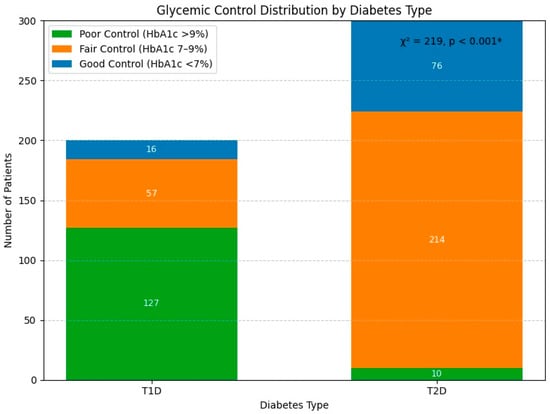
Figure 1
Open AccessReview
Antimicrobial Resistance and Causal Relationship: A Complex Approach Between Medicine and Dentistry
by
Giovanni Caivano, Fabio Massimo Sciarra, Pietro Messina, Enzo Maria Cumbo, Luigi Caradonna, Emanuele Di Vita, Salvatore Nigliaccio, Davide Alessio Fontana, Antonio Scardina and Giuseppe Alessandro Scardina
Medicina 2025, 61(10), 1870; https://doi.org/10.3390/medicina61101870 (registering DOI) - 18 Oct 2025
Abstract
Antimicrobial resistance (AMR) is widely recognized as a major global public health threat, yet its origins and implications extend beyond the simple misuse or overuse of antibiotics. This study explores AMR as a complex, multifactorial phenomenon shaped by biological, clinical, dental, environmental, and
[...] Read more.
Antimicrobial resistance (AMR) is widely recognized as a major global public health threat, yet its origins and implications extend beyond the simple misuse or overuse of antibiotics. This study explores AMR as a complex, multifactorial phenomenon shaped by biological, clinical, dental, environmental, and social dynamics, with particular attention to the emerging role of dentistry. A narrative literature review was performed, drawing from textbooks, peer-reviewed articles, and official World Health Organization (WHO) reports, with emphasis on recent findings on periodontal biofilms as reservoirs of resistance genes. The analysis shows that AMR develops through bacterial mutations, horizontal gene transfer, environmental contamination, healthcare-associated practices, and patient behaviors, all of which interact to sustain its spread. Within dentistry, subgingival microresistances are gaining relevance, complicating treatment strategies and underscoring the need for more conscious clinical decision-making. The findings suggest that reducing antibiotic prescriptions or developing new drugs alone will not suffice; instead, a systemic, interdisciplinary approach is required, integrating microbiology, clinical practice, public health, and institutional responsibility. Such awareness is essential to confront the significant clinical, economic, and social implications of AMR and to foster strategies capable of addressing its complex and evolving nature.
Full article
(This article belongs to the Section Epidemiology & Public Health)
Open AccessArticle
Psychological and Behavioral Predictors of Postpartum Lumbopelvic Pain: A Multivariate Analysis
by
Ignacio Jiménez-de-Ory, Angelika Mazur, Ángel Oliva-Pascual-Vaca, María Benito-de-Pedro, Tomás Fernández-Rodríguez and Elena Sonsoles Rodríguez-López
Medicina 2025, 61(10), 1869; https://doi.org/10.3390/medicina61101869 - 17 Oct 2025
Abstract
Background and Objectives: Postpartum lumbopelvic pain (PLPP) is a common condition that negatively affects many women’s quality of life. We aimed to analyze the influence of emotional well-being, kinesiophobia, and sleep quality as predictors of PLPP during the first year postpartum. Materials and
[...] Read more.
Background and Objectives: Postpartum lumbopelvic pain (PLPP) is a common condition that negatively affects many women’s quality of life. We aimed to analyze the influence of emotional well-being, kinesiophobia, and sleep quality as predictors of PLPP during the first year postpartum. Materials and Methods: A cross-sectional study was conducted with 192 women in their first year postpartum. Validated questionnaires were administered to evaluate pain (Oswestry Disability Index, ODI), postpartum depression (PPD) (Edinburgh Postnatal Depression Scale, EPDS), sleep quality (Pittsburgh Sleep Quality Index, PSQI), and kinesiophobia (Tampa Scale of Kinesiophobia, TSK-11). Bivariate correlations and binary logistic regression were performed to identify predictors of PLPP. Results: Overall, 42.2% of participants reported lumbopelvic pain. The prevalence of postpartum depressive symptoms was 59.9%, and kinesiophobia was present in 30.7% of women with pain. Both PPD and kinesiophobia were significantly associated with the presence of PLPP (p < 0.001). In the multivariate model, depression was the main predictor (OR = 8.1), followed by kinesiophobia (OR = 3.6). Sleep quality was not an independent predictor but may be related to PLPP through indirect mechanisms. No significant associations were found with sociodemographic, obstetric, or lifestyle variables. Conclusions: PPD and kinesiophobia are key factors in the occurrence of PLPP, while sleep quality may act as a mediating variable. These findings highlight the need for postnatal interventions addressing emotional health and fear of movement to improve the prevention and management of lumbopelvic pain in this population.
Full article
(This article belongs to the Topic New Advances in Musculoskeletal Disorders, 2nd Edition)
►▼
Show Figures

Figure 1
Open AccessArticle
Pleth Variability Index or Inferior Vena Cava Collapsibility Index? Prospective Observational Study in Volume Control and Follow-Up Acute Kidney Injury
by
Ecem Ermete Güler, Ejder Saylav Bora, Hüseyin Acar, Süleyman Kırık, Burak Acar and Şakir Hakan Aksu
Medicina 2025, 61(10), 1868; https://doi.org/10.3390/medicina61101868 - 17 Oct 2025
Abstract
►▼
Show Figures
Background and Objective: Acute kidney injury (AKI) is a serious condition requiring prompt fluid resuscitation, yet both under- and over-treatment carry risks. Accurate volume assessment is essential, especially in emergency settings. The Inferior Vena Cava Collapsibility Index (IVCCI) is commonly used but
[...] Read more.
Background and Objective: Acute kidney injury (AKI) is a serious condition requiring prompt fluid resuscitation, yet both under- and over-treatment carry risks. Accurate volume assessment is essential, especially in emergency settings. The Inferior Vena Cava Collapsibility Index (IVCCI) is commonly used but has limitations. The Pleth Variability Index (PVI) offers a non-invasive alternative, though its role in AKI remains unclear. To compare the efficacy of the Pleth Variability Index (PVI) and Inferior Vena Cava Collapsibility Index (IVCCI) in assessing fluid responsiveness and predicting in-hospital mortality in patients with acute kidney injury. Materials and Methods: This prospective observational study enrolled 50 adult AKI patients presenting to a tertiary emergency department. All patients received sequential fluid resuscitation with 1000 mL and 2000 mL of isotonic saline. PVI, IVCCI, mean arterial pressure (MAP), peripheral oxygen saturation (SpO2, perfusion index (PI), and shock index (SI) were recorded at baseline and after each fluid bolus. Changes in these parameters were analyzed to assess their utility in fluid responsiveness. Additionally, the prognostic value of baseline PVI for in-hospital mortality was investigated. Results: PVI demonstrated a significant and dose-responsive decrease following fluid administration, outperforming IVCCI, MAP, PI, SpO2, and SI in sensitivity (p < 0.001). Baseline PVI values were significantly associated with mortality (AUC: 0.821, p < 0.001), whereas post-resuscitation PVI values showed no prognostic significance. IVCCI and PI showed comparable reliability but were less sensitive to incremental volume changes. Conclusions: PVI is a sensitive, non-invasive marker of fluid responsiveness in non-intubated AKI patients and may also serve as an early prognostic indicator. Its use in emergency departments could support fluid management decisions, but further large-scale, multicenter studies are needed to validate these findings.
Full article
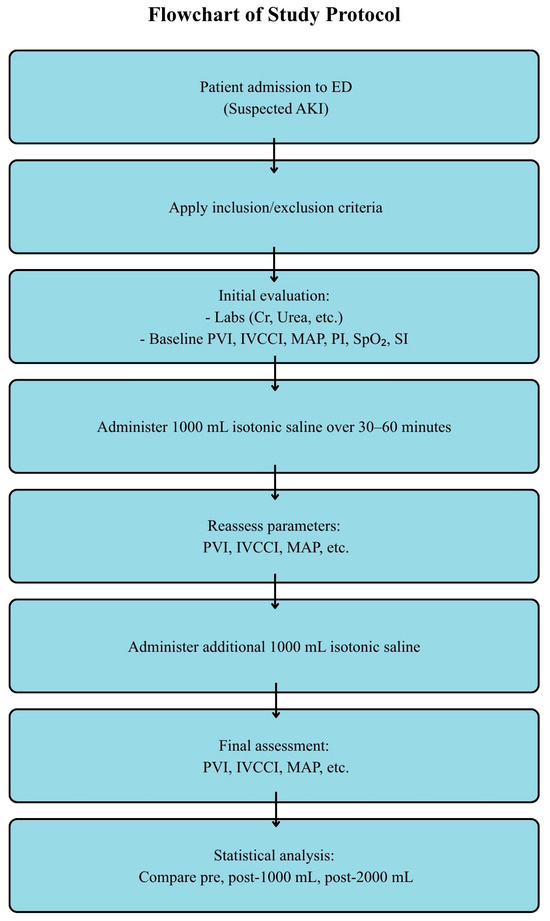
Figure 1
Open AccessCorrection
Correction: Poštuvan et al. A Lonelier World after COVID-19: Longitudinal Population-Based Study of Well-Being, Emotional and Social Loneliness, and Suicidal Behaviour in Slovenia. Medicina 2024, 60, 312
by
Vita Poštuvan, Nina Krohne, Meta Lavrič, Vanja Gomboc, Diego De Leo and Lucia Rojs
Medicina 2025, 61(10), 1867; https://doi.org/10.3390/medicina61101867 - 17 Oct 2025
Abstract
►▼
Show Figures
Error in Figures [...]
Full article
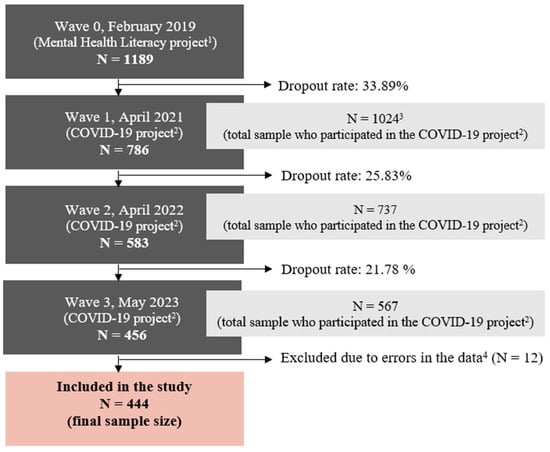
Figure 1
Open AccessSystematic Review
Do SGLT2 Inhibitors Improve Cardiovascular Outcomes After Acute Coronary Syndrome Regardless of Diabetes? A Systematic Review and Meta-Analysis
by
Ioana Maria Suciu, Silvia Ana Luca, Simina Crișan, Alina-Ramona Cozlac, Svetlana Stoica, Constantin Tudor Luca, Bogdan Timar and Dan Gaita
Medicina 2025, 61(10), 1866; https://doi.org/10.3390/medicina61101866 - 17 Oct 2025
Abstract
Background and Objectives: This systematic review and meta-analysis aims to evaluate whether the benefits of sodium–glucose co-transporter-2 (SGLT2) inhibitors on cardiovascular outcomes extend when initiated in patients with acute coronary syndrome (ACS), regardless of diabetic status. Materials and Methods: PubMed, Embase,
[...] Read more.
Background and Objectives: This systematic review and meta-analysis aims to evaluate whether the benefits of sodium–glucose co-transporter-2 (SGLT2) inhibitors on cardiovascular outcomes extend when initiated in patients with acute coronary syndrome (ACS), regardless of diabetic status. Materials and Methods: PubMed, Embase, and the Cochrane Library were searched from 2015 up to July 2025, according to PRISMA 2020 guidelines. Eligible studies were randomized controlled trials (RCTs) and observational studies comparing SGLT2 inhibitors with controls in post-ACS patients. Articles without full-text data for extraction, with unavailable outcome data or evaluating patients with stable coronary artery disease (CAD) were excluded. Primary outcomes were all-cause and cardiovascular (CV) mortality. Secondary outcomes included recurrent myocardial infarction (MI), rehospitalization for ACS, revascularization and stroke. Meta-analysis was conducted using the R statistical software (Version 4.5.1). Subgroup analysis was performed by study design to evaluate outcomes in type 2 diabetes mellitus (T2DM) populations. Risk of bias was assessed using the Cochrane Risk of Bias (RoB) 2.0 and Risk of Bias In Non-randomized Studies of Interventions (ROBINS-I) tools. Certainty of evidence was evaluated using the Grading of Recommendations, Assessment, Development and Evaluation (GRADE) approach. Results: A total of 16 studies were included in the meta-analysis, encompassing over 130,000 patients. Initiation of SGLT2 inhibitors after ACS was associated with a significant reduction in the primary outcome of all-cause mortality [hazard ratio (HR) = 0.77; (95% confidence interval (CI): 0.67–0.89)] and CV mortality [HR = 0.83; (95% CI: 0.70–0.99)]. In subgroup analyses, patients with T2DM experienced a significant reduction in all-cause mortality [HR = 0.73, (95% CI: 0.62–0.86)] and recurrent MI [HR = 0.83, (95% CI: 0.69–0.99)]. Conclusions: Initiation of SGLT2 inhibitors after ACS is associated with a significant reduction in all-cause and CV mortality. Subgroup analysis further demonstrated a reduction in all-cause mortality and recurrent myocardial infarction among patients with T2DM, while in patients without diabetes, no significant effects were observed. Although evidence certainty ranged from low to moderate and large RCTs are still ongoing, these findings support the early introduction of SGLT2 inhibitors in eligible patients with T2DM following ACS, pending confirmation by large, prospective clinical trials.
Full article
(This article belongs to the Special Issue Advances in Acute Myocardial Infarction)
►▼
Show Figures

Figure 1
Open AccessArticle
Changes in Speckle Tracking Echocardiography Values of the Descending Thoracic Aorta with Rising Positive End-Expiratory Pressure Levels
by
María Belén Martínez-Lechuga, Javier Hidalgo-Martín, José Ángel Ramos Cuadra, Julia Manetsberger, Ana Blanco-Serrano, Veronica Todaro, Gabriel Heras-La-Calle, María Leyre Lavilla Lerma, Juan Carlos Fernández-Guerrero and Manuel Ruiz-Bailén
Medicina 2025, 61(10), 1865; https://doi.org/10.3390/medicina61101865 - 16 Oct 2025
Abstract
Background and Objectives: The aim of this study is to evaluate the changes in speckle tracking velocity vector analysis (VVI) values within the descending thoracic aorta (DTA) in patients with cardiogenic shock (CS) who are on mechanical ventilation (MV), under varying levels of
[...] Read more.
Background and Objectives: The aim of this study is to evaluate the changes in speckle tracking velocity vector analysis (VVI) values within the descending thoracic aorta (DTA) in patients with cardiogenic shock (CS) who are on mechanical ventilation (MV), under varying levels of positive end-expiratory pressure (PEEP). Materials and Methods: Transthoracic echocardiography (TTE) was performed during incremental increases in positive end-expiratory pressure (PEEP) from 0 to 15 cmH2O over 15 to 30 min. The effects of increased PEEP on velocities, displacement, strain (S), and strain rate (SR) were evaluated. DTA speckle tracking values were analyzed to determine their association with patient mortality. A control group of healthy individuals was used to establish normal DTA variables. Results: Sixty-two mechanically ventilated patients were included in this study. The mean age was 62.48 ± 11.22 years. The highest values for various parameters were obtained with 5 cmH2O PEEP. The values obtained for DTA using speckle tracking at increasing PEEP levels (ZEEP, PEEP 5, PEEP 10, and PEEP 15 cm H2O) were as follows: DTA rotational velocity [55.18 ± 14.60, 107.39 ± 19.33, 60.05 ± 0.28, and 42.11 ± 0.34°/s], DTA radial velocity [0.80 ± 0.09, 2.21 ± 0.27, 0.99 ± 0.16, 0.56 ± 0.17 cm/s], DTA rotational displacement [5.68 ± 0.40, 15.71 ± 0.13, 5.98 ± 0.35, 6.64 ± 3.45°], circumferential strain for DTA [−8.55 ± 0.92, −11.86 ± 0.07, −9.88 ± 0.25, −8.76 ± 0.6%], and DTA circumferential SR [−0.87 ± 0.1, −1.91 ± 0.03, −1.21 ± 0.12, −0.97 ± 0.05/s]; all p-values < 0.05. Logistic binary regression found left ventricular strain and DTA rotational displacement on 5 cmH2O PEEP level were associated with death. Conclusions: Changes in PEEP levels affect the speckle tracking measurements of the DTA. Speckle tracking can be used to assess the thoracic aorta, and certain parameters, such as rotational displacement, may relate to the prognosis of cardiogenic shock.
Full article
(This article belongs to the Special Issue New Insights into Heart Failure)
►▼
Show Figures
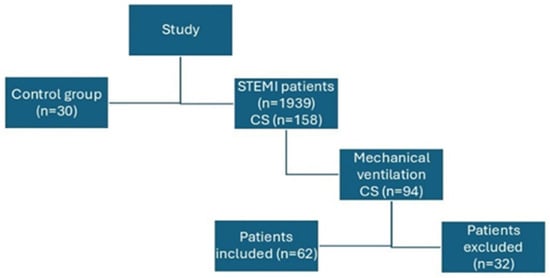
Figure 1
Open AccessReview
Chromosomal Roadblocks in Male Fertility: Mechanisms, Risk Factors and Syndromes
by
Achilleas G. Mitrakas, Christina-Angelika Alexiadi, Sofia Gargani, Triantafyllos Alexiadis, Sofia-Panagiota Alexopoulou, Olga Pagonopoulou and Maria Lambropoulou
Medicina 2025, 61(10), 1864; https://doi.org/10.3390/medicina61101864 - 16 Oct 2025
Abstract
Male infertility affects nearly 15% of couples worldwide, with chromosomal abnormalities representing a major underlying cause. This review explores how numerical and structural chromosomal anomalies, along with environmental exposures, lifestyle factors, and age-related genetic changes, disrupt spermatogenesis and contribute to infertility. It synthesizes
[...] Read more.
Male infertility affects nearly 15% of couples worldwide, with chromosomal abnormalities representing a major underlying cause. This review explores how numerical and structural chromosomal anomalies, along with environmental exposures, lifestyle factors, and age-related genetic changes, disrupt spermatogenesis and contribute to infertility. It synthesizes findings from cytogenetic, molecular, and clinical studies, with particular focus on mechanisms such as meiotic nondisjunction, spindle assembly checkpoint dysfunction, and alterations in cohesin and synaptonemal complex proteins. Chromosomal abnormalities, both numerical and structural, emerge as key contributors to male infertility by impairing chromosomal segregation and recombination, often leading to azoospermia or oligospermia. Meiotic checkpoint failures and recombination errors further exacerbate the production of aneuploid sperm. Environmental toxins, oxidative stress, and poor nutrition disrupt hormonal balance and chromatin integrity, while advancing paternal age is associated with increased sperm aneuploidy and impaired meiotic control, with implications for assisted reproduction. Specific syndromes, including AZF deletions, Kallmann syndrome, and 46,XX testicular DSD, exemplify the direct genetic impact on male fertility. Overall, chromosomal abnormalities are central to the pathophysiology of male infertility, arising from intrinsic meiotic errors as well as extrinsic environmental and lifestyle factors. Integrating cytogenetic diagnostics, genetic counseling, and lifestyle interventions is essential for comprehensive fertility assessment and management. Further research into molecular biomarkers and targeted therapies could enhance diagnosis, improve treatment strategies, and lead to better reproductive outcomes.
Full article
(This article belongs to the Special Issue From Conception to Birth: Embryonic Development and Disease)
►▼
Show Figures

Figure 1
Open AccessArticle
High Satisfaction and Strength Recovery After Mini-Open Double-Row Repair of Partial Gluteal Tears Without Advanced Osteoarthritis: A Unicentric Retrospective Cohort Study
by
Ingo J. Banke, Amr Seyam, Kilian Blobner, Rüdiger von Eisenhart-Rothe and Vanessa Twardy
Medicina 2025, 61(10), 1863; https://doi.org/10.3390/medicina61101863 - 16 Oct 2025
Abstract
Background and Objectives: Partial gluteal tendon tears in native hips are often misdiagnosed as greater trochanteric pain syndrome, resulting in ineffective conservative treatment and persistent symptoms. Although surgical repair techniques exist, data on objective strength outcomes in non-arthritic hips remain limited. The
[...] Read more.
Background and Objectives: Partial gluteal tendon tears in native hips are often misdiagnosed as greater trochanteric pain syndrome, resulting in ineffective conservative treatment and persistent symptoms. Although surgical repair techniques exist, data on objective strength outcomes in non-arthritic hips remain limited. The objective of this study was to evaluate pain reduction, patient-reported outcomes (PROMs), and isometric hip abductor strength following mini-open, knotless double-row repair using the Hip Bridge technique. Material and Methods: This retrospective, single-center cohort study (Level III) with prospective outcome evaluation included 27 patients (mean age 53 years, BMI 27 kg/m2) with partial gluteal tendon tears and no advanced osteoarthritis (Tönnis grade ≤ 1), treated between 2015 and 2022 using the mini-open, knotless double-row Hip Bridge technique. The mean follow-up was 29.3 ± 24.3 months (minimum 6 months). Diagnosis was confirmed by 3-Tesla MRI, and other sources of lateral hip pain were excluded. Clinical outcomes included the Visual Analog Scale (VAS), modified Harris Hip Score (mHHS), Hip Outcome Score (HOS), normalized Western Ontario and McMaster Universities Osteoarthritis Index (nWOMAC), and Copenhagen Hip and Groin Outcome Score (HAGOS). Isometric hip abductor strength was assessed in 22 patients using a dynamometer, comparing the operated and contralateral limbs. Results: Postoperative satisfaction was high: 93% would undergo surgery again, 88% reported improved Trendelenburg gait, and 85% noted subjective strength gains. Pain improved significantly from VAS 8 (range, 3 to 10) preoperatively to VAS 2 (range, 0 to 7) postoperatively (p < 0.001); 100% reported pain relief. Patient-reported outcome scores were mHHS, 84.2; nWOMAC, 86.5; HOS, 80.7; and HAGOS, 70.7. Isometric strength testing showed significant improvement on the operated side (Fmax: p = 0.006; Fmean: p = 0.009). The mean limb symmetry index was 118% for Fmax and 122% for Fmean. Conclusions: Mini-open, knotless double-row repair of partial gluteal tears in non-arthritic hips yields adequate pain relief, high satisfaction, and objective strength recovery. The Hip Bridge technique could be an effective option after failed conservative treatment. Future prospective comparative studies are warranted to validate mid-term outcomes and establish long-term efficacy.
Full article
(This article belongs to the Special Issue Clinical Research in Orthopaedics and Trauma Surgery)
►▼
Show Figures

Figure 1
Open AccessArticle
Evaluation of the Performance of StypCelTM Absorbable Hemostat for Intraoperative Hemorrhage Control in Neurosurgery: A Multicenter, Single-Arm Study in Riga, Latvia
by
Kaspars Auslands, Evelina Kocane, Evija Bergfelde, Egils Valeinis, Julija Dolgopolova, Jekabs Aksiks and Igors Aksiks
Medicina 2025, 61(10), 1862; https://doi.org/10.3390/medicina61101862 - 16 Oct 2025
Abstract
Background and Objectives: Intraoperative bleeding during neurosurgical procedures poses a significant risk by increasing morbidity and mortality, obscuring the surgical field and prolonging operative time and hospitalization. Effective hemostasis is therefore essential, frequently necessitating the use of topical hemostatic agents. This study aimed
[...] Read more.
Background and Objectives: Intraoperative bleeding during neurosurgical procedures poses a significant risk by increasing morbidity and mortality, obscuring the surgical field and prolonging operative time and hospitalization. Effective hemostasis is therefore essential, frequently necessitating the use of topical hemostatic agents. This study aimed to evaluate the performance of a plant-derived oxidized regenerated cellulose (ORC) hemostatic agent StypCel™ Absorbable Hemostat (Medprin Regenerative Medical Technologies Co., Ltd.) in various neurosurgical interventions, including intracranial tumor resections, spinal surgeries, trigeminal neuralgia operations, cerebrospinal fluid fistula repair and ventriculoperitoneal shunt implantation. The study aimed to assess its performance in these procedures due to the high risk of intraoperative bleeding and the challenges of achieving hemostasis in delicate neural structures. Materials and Methods: This prospective, single-arm clinical study included 46 patients who underwent neurosurgical procedures at three neurosurgerical clinics in Riga, Latvia. The primary endpoint was the rate of effective bleeding control achieved within 5 min of StypCel™ application. Safety assessments included monitoring for central nervous system infections (CNSI), intracranial granuloma formation, new-onset neurological deficits, seizures, anaphylactic reactions or device malfunction. All adverse events (AEs) and serious adverse events (SAEs) were documented during the postoperative follow-up. Results: The cohort consisted of 46 patients (29 females and 17 males), including 20 with neoplastic intracranial lesions and 26 with other neurosurgical pathologies. Effective bleeding control within 5 min was achieved in 93.5% of cases (95% CI: 82.1–98.6%). In three patients, bleeding control exceeded 5 min due to unexpected arterial hemorrhage encountered during intracranial tumor resection. No device-related AEs, SAEs, CNSIs or granuloma formations were reported throughout the follow-up period. Conclusions: The findings demonstrate that StypCel™ Absorbable Hemostat is a safe and effective adjunct for achieving intraoperative hemostasis in neurosurgical procedures. Its favorable safety profile and high hemostatic success rate support its clinical utility, particularly for controlling low-pressure venous or capillary bleeding. Further comparative and long-term studies are warranted to validate these results in broader surgical settings.
Full article
(This article belongs to the Section Neurology)
Open AccessArticle
Novel Variants and Clinical Heterogeneity in Pediatric Calcium Metabolism Disorders Identified Through High-Yield Tiered Genetic Testing in a Taiwanese Cohort
by
Ting-Yu Kang, Yen-Yin Chou, Yu-Ming Chang, Yu-Wen Pan and Meng-Che Tsai
Medicina 2025, 61(10), 1861; https://doi.org/10.3390/medicina61101861 - 16 Oct 2025
Abstract
Background and Objectives: Inherited disorders of calcium metabolism are rare pediatric conditions with diverse manifestations, including seizures, growth impairment, and renal or skeletal complications. Precise molecular diagnosis is crucial for effective management and informed genetic counseling. This study aimed to develop a
[...] Read more.
Background and Objectives: Inherited disorders of calcium metabolism are rare pediatric conditions with diverse manifestations, including seizures, growth impairment, and renal or skeletal complications. Precise molecular diagnosis is crucial for effective management and informed genetic counseling. This study aimed to develop a systematic diagnostic approach, broaden the mutational spectrum, and characterize initial clinical features. Material and Methods: We retrospectively analyzed 13 pediatric cases at a tertiary center in southern Taiwan (2020–2025). Clinical, biochemical, and imaging data were reviewed. Genetic testing followed a tiered strategy to identify copy number variations and single-nucleotide variants. Variants were classified according to the ACMG/AMP guidelines and assessed by in silico tools. Results: The pediatric cohort (8 males, 5 females) had a median diagnostic age of 2 years and a mean follow-up of 7.7 years. Hypoparathyroidism was most common (n = 7), followed by PTH resistance (n = 3), hyperparathyroidism (n = 1), calcipenic rickets (n = 1), and syndromic hypercalcemia (n = 1). Genetic diagnoses were established in 12 children and one parent, involving CASR, GNAS, PRKAR1A, CYP27B1, and KMT2D. Two novel variants were identified (CASR p.Val836Ile and GNAS c.719-30A>T). Phenotypic heterogeneity included incomplete penetrance in autosomal dominant hypocalcemia and variable multisystem involvement in syndromic cases. Conclusions: A stepwise genetic testing strategy achieved a high diagnostic yield in pediatric calcium metabolism disorders. The discovery of novel and population-specific variants expands the mutational spectrum, supporting precision medicine in pediatric endocrinology.
Full article
(This article belongs to the Section Pediatrics)
►▼
Show Figures

Figure 1
Open AccessArticle
A Comparative Study of Five Target Volume Definitions for Radiotherapy in Glioblastoma Multiforme
by
Kamuran Ibis, Kubra Ozkaya Toraman, Canan Koksal Akbas, Ozlem Guler Guniken, Korhan Kokce, Sezi Ceren Gunay, Rasim Meral and Musa Altun
Medicina 2025, 61(10), 1860; https://doi.org/10.3390/medicina61101860 - 16 Oct 2025
Abstract
Background and Objectives: This study aimed to compare target volumes and organ-at-risk (OAR) doses using five different volume definitions in radiotherapy (RT) planning of patients with glioblastoma multiforme (GBM). Materials and Methods: Rigid image fusion was performed using simulation computed tomography and postoperative
[...] Read more.
Background and Objectives: This study aimed to compare target volumes and organ-at-risk (OAR) doses using five different volume definitions in radiotherapy (RT) planning of patients with glioblastoma multiforme (GBM). Materials and Methods: Rigid image fusion was performed using simulation computed tomography and postoperative magnetic resonance imaging scans of 20 patients with GBM. Volumetric modulated arc therapy (VMAT) plans were generated according to three two-phase protocols—American Brain Tumor Consortium (ABTC), North Central Cancer Treatment Group/Alliance (NCCTG/Alliance), and Radiation Therapy Oncology Group/NRG (RTOG/NRG)—and two single-phase protocols—European Organisation for Research and Treatment of Cancer (EORTC) and European Society for Radiotherapy and Oncology–European Association of Neuro-Oncology (ESTRO/EANO)—each delivering a total dose of 60 Gy. OARs and dose constraints were evaluated. Statistical analysis was performed using the paired sample t-test. Results: The ESTRO/EANO volume had the smallest median PTV overall (p < 0.001). The lowest brain-PTV Dmean in the initial phase was observed in the ABTC group, followed closely by ESTRO/EANO (p < 0.001). Among boost volumes, the ABTC volume was the smallest, and the median brain-PTV Dmean was lowest in the ESTRO/EANO volume. ESTRO/EANO provided the lowest doses for contralateral and ipsilateral cochlea Dmean, brainstem D1cc, and contralateral lens Dmax. Notably, both EORTC and ESTRO/EANO plans maintained OAR doses within acceptable constraints, with ESTRO/EANO achieving the most consistently minimised exposure. Conclusions: Reduced irradiated brain volume, acceptable OAR preservation and practical applicability, the use of ESTRO-EANO and EORTC target volumes in radiotherapy of glioblastoma multiforme may provide dosimetric advantages that require further validation in clinical outcome studies.
Full article
(This article belongs to the Special Issue High-Grade Gliomas: Updates and Challenges)
►▼
Show Figures
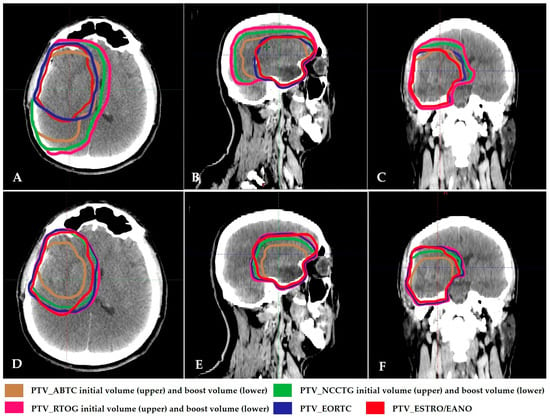
Figure 1
Open AccessArticle
En Bloc Bipolar Prostate Enucleation Using the Mushroom Technique with Early Apical Release: Short-Term Outcomes
by
Zoltán Kiss, Mihály Murányi, Alexandra Barkóczi, Gyula Drabik, Attila Nagy and Tibor Flaskó
Medicina 2025, 61(10), 1859; https://doi.org/10.3390/medicina61101859 - 16 Oct 2025
Abstract
Background and Objectives: While transurethral resection of the prostate remains the gold standard for surgical treatment of benign prostatic hyperplasia, anatomical endoscopic enucleation of the prostate provides a safe, durable, and size-independent alternative. Our study introduces a specific technical innovation, i.e., en bloc
[...] Read more.
Background and Objectives: While transurethral resection of the prostate remains the gold standard for surgical treatment of benign prostatic hyperplasia, anatomical endoscopic enucleation of the prostate provides a safe, durable, and size-independent alternative. Our study introduces a specific technical innovation, i.e., en bloc bipolar prostate enucleation performed exclusively via sheath-tip mechanical dissection without the use of a dedicated enucleation loop, combined with the mushroom technique and early apical release. Materials and Methods: Between January 2018 and May 2023, 252 patients with prostate volumes > 30 mL and significant lower urinary tract symptoms underwent en bloc bipolar prostate enucleation via the mushroom technique with early apical release. Data were retrospectively evaluated to assess perioperative results, postoperative outcomes, and complications. Results: The median age of the cohort was 70 (65–76) years, with a median prostate volume of 60 (40–88.5) mL. The median operative time was 40 (30–70) min, and the median weight of enucleated tissue was 34 (16.5–60) g. Significant improvements were observed in the International Prostate Symptom score, Quality of Life score, maximum flow rate, average flow rate, and postvoid residual urine at 12 months (p < 0.001). The rate of transient stress urinary incontinence decreased from 19.44% at 1 month to 2.38% at 12 months. Conclusions: En bloc bipolar prostate enucleation using the mushroom technique is a safe and effective treatment for benign prostatic hyperplasia, yielding significant improvements in urinary symptoms and flow rates, with a manageable complication profile. Further multicenter studies are needed to confirm these findings.
Full article
(This article belongs to the Section Urology & Nephrology)
►▼
Show Figures

Figure 1
Open AccessArticle
Molecular Subtypes and Survival Patterns in Female Breast Cancer: Insights from a 12-Year Cohort
by
Ionut Marcel Cobec, Ingolf Juhasz-Böss, Peter Seropian, Sarah Huwer, Vlad Bogdan Varzaru, Andreas Rempen and Aurica Elisabeta Moatar
Medicina 2025, 61(10), 1858; https://doi.org/10.3390/medicina61101858 - 16 Oct 2025
Abstract
Background and Objectives: Breast cancer is one of the most common cancers in women and the most common cause of cancer death. Hormone receptors, specifically the estrogen receptor (ER) and progesterone receptor (PR), as well as human epidermal growth factor receptor-2 (Her2), are
[...] Read more.
Background and Objectives: Breast cancer is one of the most common cancers in women and the most common cause of cancer death. Hormone receptors, specifically the estrogen receptor (ER) and progesterone receptor (PR), as well as human epidermal growth factor receptor-2 (Her2), are tumor-specific markers used to guide breast cancer therapy. The purpose of this study is to evaluate the impact of tumor biology, including ER, PR, and Her2 expression, on survival in female breast cancer. Materials and Methods: This retrospective cohort study represents an analysis of 2016 female breast cancer cases using anonymized data. We reviewed cases of female breast cancer diagnosed from 1 January 2010 to 31 December 2021, in the Clinic of Obstetrics and Gynecology, Diakoneo Diak Klinikum Schwäbisch Hall, Germany. Data on clinical, pathology, immunohistochemistry, and follow-up characteristics were retrieved from the clinic’s database. To interpret the data, we used the software IBM SPSS Statistics 20, and, to account for multiple comparisons, we used a Bonferroni-adjusted significance level of 0.004. In the survival analysis, the Kaplan–Meier method and the log-rank test of equality of survival distributions were applied. Results: Among 2016 female breast cancer cases, 84.5% (1703/2016) were hormone receptor (HR)-positive. The 5-year overall survival was 0.873 (95% CI (0.851, 0.895); 99.6% CI (0.841, 0.905)) for HR-positive patients and 0.760 (95% CI (0.713, 0.807); 99.6% CI (0.691, 0.829)) for HR-negative patients (p < 0.001). Statistically significant differences were observed among HR+/HER2+, HR+/HER2−, HR−/HER2+, and triple-negative subtypes (p = 0.003). When comparing survival distributions based solely on HER2 expression (positive vs. negative), no statistically significant difference was observed (p = 0.29). Conclusions: Statistically significant differences in unadjusted overall survival distributions were observed among breast cancer molecular subtypes. HR-positive breast cancers demonstrated better overall survival than HR-negative cancers, while no statistically significant difference in unadjusted survival was observed between HER2-positive and HER2-negative groups.
Full article
(This article belongs to the Special Issue New Developments in Diagnosis and Management of Breast Cancer)
►▼
Show Figures

Figure 1

Journal Menu
► ▼ Journal Menu-
- Medicina Home
- Aims & Scope
- Editorial Board
- Reviewer Board
- Topical Advisory Panel
- Instructions for Authors
- Special Issues
- Topics
- Sections & Collections
- Article Processing Charge
- Indexing & Archiving
- Editor’s Choice Articles
- Most Cited & Viewed
- Journal Statistics
- Journal History
- Journal Awards
- Society Collaborations
- Conferences
- Editorial Office
Journal Browser
► ▼ Journal BrowserHighly Accessed Articles
Latest Books
E-Mail Alert
News
Topics
Topic in
Clinics and Practice, Cosmetics, JCM, Medicina, Dermato, LabMed, Psychology International
Advances in Psychodermatology
Topic Editors: Jacek C. Szepietowski, Andrzej JaworekDeadline: 30 November 2025
Topic in
Cardiogenetics, Hearts, JCDD, JCM, Medicina
Biomarkers in Cardiovascular Disease—Chances and Risks, 2nd Volume
Topic Editors: Alexander E. Berezin, Michael LichtenauerDeadline: 31 December 2025
Topic in
JFMK, Medicina, Therapeutics, Healthcare, JCM, Rheumato
New Trends in Physiotherapy Care: Improvements in Functionality, Pain Management, and Quality of Life
Topic Editors: Carlos Bernal-Utrera, Ernesto Anarte-Lazo, Juan José González GerezDeadline: 3 March 2026
Topic in
Diagnostics, Geriatrics, JCDD, Medicina, JPM, Medicines
New Research on Atrial Fibrillation
Topic Editors: Michele Magnocavallo, Domenico G. Della Rocca, Stefano Bianchi, Pietro Rossi, Antonio BisignaniDeadline: 31 March 2026

Conferences
Special Issues
Special Issue in
Medicina
Gut Microbiota and Gastrointestinal Cancer: Pathways to Progression and Opportunities for Intervention
Guest Editors: Vikas Kumar Somani, Naoshad Muhammad, Somya AggarwalDeadline: 20 October 2025
Special Issue in
Medicina
Revolutionizing Cardiopulmonary Resuscitation: Contemporary Advances and Challenges
Guest Editors: Georgios Mavrovounis, Ioannis Pantazopoulos, Maria MermiriDeadline: 20 October 2025
Special Issue in
Medicina
Pulmonary Fibrosis: Current Understanding and Future Directions
Guest Editors: Satoshi Okamori, Yusuke NakamuraDeadline: 25 October 2025
Special Issue in
Medicina
Epidemiology of Geriatric Syndromes: Life Course Risk or Protective Factors
Guest Editor: Carlos Alfonso Reyes-OrtizDeadline: 25 October 2025
Topical Collections
Topical Collection in
Medicina
Interventional Oncology
Collection Editors: François Cornelis, Matthias Barral, Adrian Kastler, Dimitrios Filippiadis
Topical Collection in
Medicina
Interdisciplinary Medicine – The Key For Personalized Medicine
Collection Editor: Camelia Diaconu
Topical Collection in
Medicina
Pain, Bleeding, Trauma and Infections: The 4 Horsemen of the Apocalypse for the Emergency Medicine
Collection Editor: Marcello Candelli
Topical Collection in
Medicina
Frontiers in Breast Cancer Diagnosis and Treatment
Collection Editors: Jimmy T. Efird, Tithi Biswas





